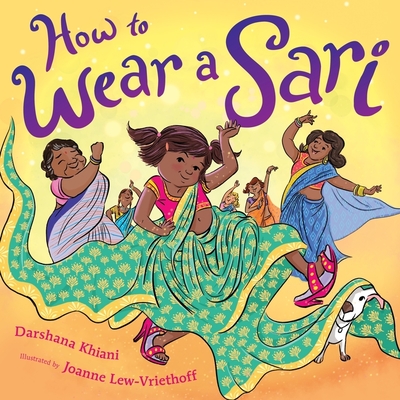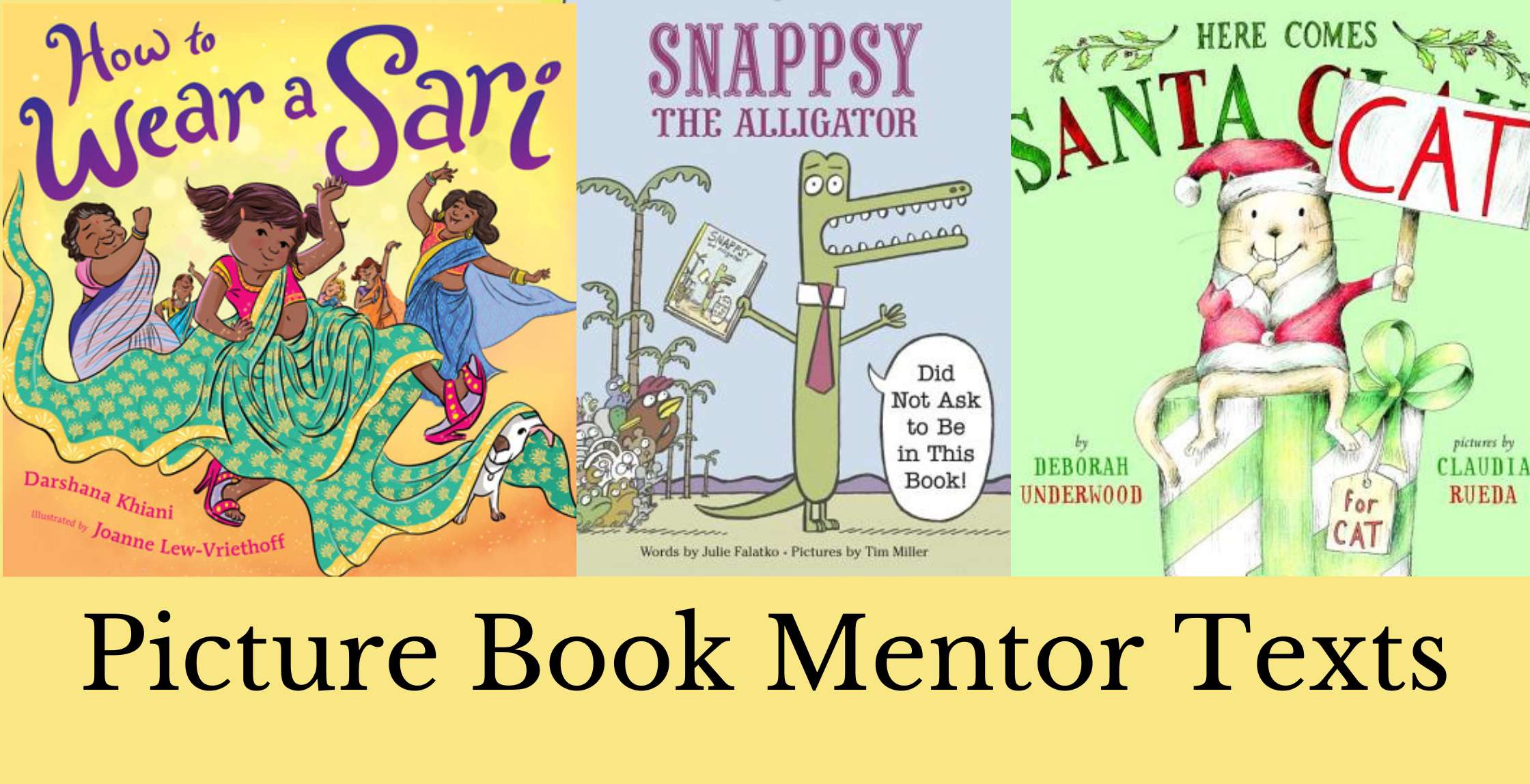by Kristi Wright
This month, KidLitCraft is excited to introduce a new occasional series focused on Picture Book Mentor Texts. When we say “mentor text” we mean an excellent literary example that can be studied for craft techniques and then imitated. Often a mentor text is analyzed for structure, but it also can be emulated for something else, like meter or voice or theme. Whether you are new to the art of picture book writing or a seasoned professional, you can always learn something from studying someone else’s work and integrating what you’ve learned into your own writing.
Wait a second, you say, Is this a trick? Don’t you always explore mentor texts in your craft posts? Yes, every time we look at craft through the lens of a book, we’re exploring a mentor text for that element of craft.
What’s different about this series? We’ll still look at one book with one craft focus, but we’ll put that element in the context of all the craft that goes into architecting a picture book. We’ll also give you a list of comparable picture books to do more mentor text research on your own.
One thing I’ve always admired about picture book author, Darshana Khiani, is her attention to craft. She excels in her study of the picture book artform. Whenever I have the need for an excellent mentor text for a particular element of writing, I know she’ll have at least two, maybe three, probably more, suggestions for other picture books I can read. Therefore, it feels right to spotlight her debut picture book, How To Wear a Sari (beautifully and humorously illustrated by Joanne Lew-Vriethoff) as the first in our Picture Book Mentor Texts series.

How To Wear a Sari is a charming how-to guide for wearing a colorful, twinkly, silky sari. It’s also a great mentor text for how to write an excellent picture book in 2nd person.
Most picture books use either 1st person POV where the narrator main character refers to themselves as “I” or 3rd person POV where the narrator refers to the main character as he/she/they.
In 2nd person POV, the narrator talks directly to the main character(s), using the pronoun “You.” A relatively uncommon point of view, it takes some skill to do it right. In Khiani’s case, her narrator encourages her main character, rightly or wrongly, to dress up in her mother’s sari, leading to hilarious consequences.
But doing one thing great in a picture book isn’t enough. You still need a relatable story that’s a joy to read out loud with that elusive “re-readable” factor. What makes Khiani’s debut so rich is that its use of 2nd person narration is only one (important) aspect of this well-constructed picture book.
START WITH A MISCHIEVOUS NARRATOR
Khiani imbues her narrator with just enough mischievousness to clue in the young readers that the narrator is actually tempting the main character to be “naughty.” One might imagine that the narrator is an older sister or cousin. The main character follows her lead with an earnest enthusiasm and we, as the audience, can’t help but laugh as we anticipate the trouble that will ensue. The book opens with questions like:
Are you tired of being treated like a little kid?
Do you want to show them you can do grown-up things too?
At the midpoint, the narrator makes sure to remind the main character of the stakes:
And they said you were too small. Silly adults.
Because the narrator is only encouraging the main character to dress up in her mother’s sari, we can laugh at the antics without worrying about the trouble she’s going to get into. The narrator is mischievous throughout without ever being mean.
When you’re writing in 2nd person POV, the voice of the narrator is key! It also contributes in a big way to the re-readability of the picture book. The humor in How To Wear a Sari comes from a combination of the narrator’s mischievousness and the fabulously funny illustrations. Together they will keep children coming back again and again to revel in the main character’s antics.
ADD A RELATABLE SITUATION
Most children will be able to relate to both wanting older relatives to stop treating them like babies and also dressing up in their parents clothes.
They will delight in the main character’s attempts to become skilled at draping herself in her mother’s sari and walking in her mother’s high-heels.
ADD ANOTHER LAYER
To stand out amongst a plethora of fabulous kidlit storytellers, it’s always an excellent idea to give your picture book more depth through one or more intriguing layers. In Khiani’s debut, she provides the culturally rich layer of actually showing her audience the steps required to wear a sari.
For someone from Indian culture, the picture book acts as a mirror for an element they likely are familiar with, whereas for someone like me, it provides a window into the process. It was fascinating learning about the sari blouse and petticoat and the hardest part–getting the pleats right.
Whether you already know how to wear a sari or you are being introduced to the concept, this book brings humor and joy to the process, as well as illumination of the steps required.
A SUBTLE MESSAGE
Finally, Khiani adds, with a very light touch, the great message for children and adults alike that making mistakes is an important part of attempting new things and is nothing to be ashamed of. In fact, in How To Wear a Sari it’s a badge of honor to learn through mistakes and laugh about it along the way. If the message were overt, it would feel heavy-handed, but Khiani with a huge assist by masterful illustrator Lew-Vriethoff, makes it something fun that creates opportunities for readers to share their own mishap stories.
MORE MENTOR TEXTS
Writing picture books is a lot harder than it looks. Using mentor texts can accelerate your learning of a particular writing technique, while reinforcing best practices for the art of picture book writing in general. We asked Khiani for some of the mentor texts she used when she started writing in 2nd person POV. NOTE: since it takes a long time for picture books to go from writing to publication, this list is a few years old. But it’s still a great list!

Vampirina Ballerina series, by Anne Marie Pace, illustrated by LeUyen Pham
How to Babysit a Grandpa series by Jean Reagan, illustrated by Lee Wildish
Here Comes Santa Cat (series) by Deborah Underwood, illustrated by Claudia Rueda
A Beginner’s Guide to Bear Spotting by Michelle Robinson, illustrated by David Roberts
Snappsy the Alligator (Did Not Ask to Be in This Book) by Julie Falatko, illustrated by Tim Miller
NOW IT’S YOUR TURN
- If you would like to experiment with 2nd person POV, grab Khiani’s How To Wear a Sari plus a couple of her go-to mentor texts from the list above and read them a few times. Then experiment with your own narrator. Play with ways to bring humor into their voice.
- For your current picture book project, consider which element might define it. Maybe it’s breaking the 4th wall, or it has an unreliable narrator, or it’s a rhyming text. Once you’ve identified an element to research, run to your nearest library or independent bookseller and get suggestions for great picture books that use that element.
- Gather up your mentor texts and analyze them spread by spread.
- Now, draft your own picture book using what you’ve learned. Or use what you’ve learned to revise something you’ve already drafted. Remember that a good mentor text should encourage you to play with the art form.
For more picture book craft, check out this post about the elements of a picture book and this one on picture book endings.
Kristi Wright (co-editor) writes picture books and middle grade novels. Her goal as a writer is to give children a sense of wonder, a hopefulness about humanity, and a belief in their future. She is represented by Kurestin Armada at Root Literary. She is an active volunteer for SCBWI and a 12 X 12 member. Find her at www.kristiwrightauthor.com and on Twitter @KristiWrite.


COMMENTs:
0